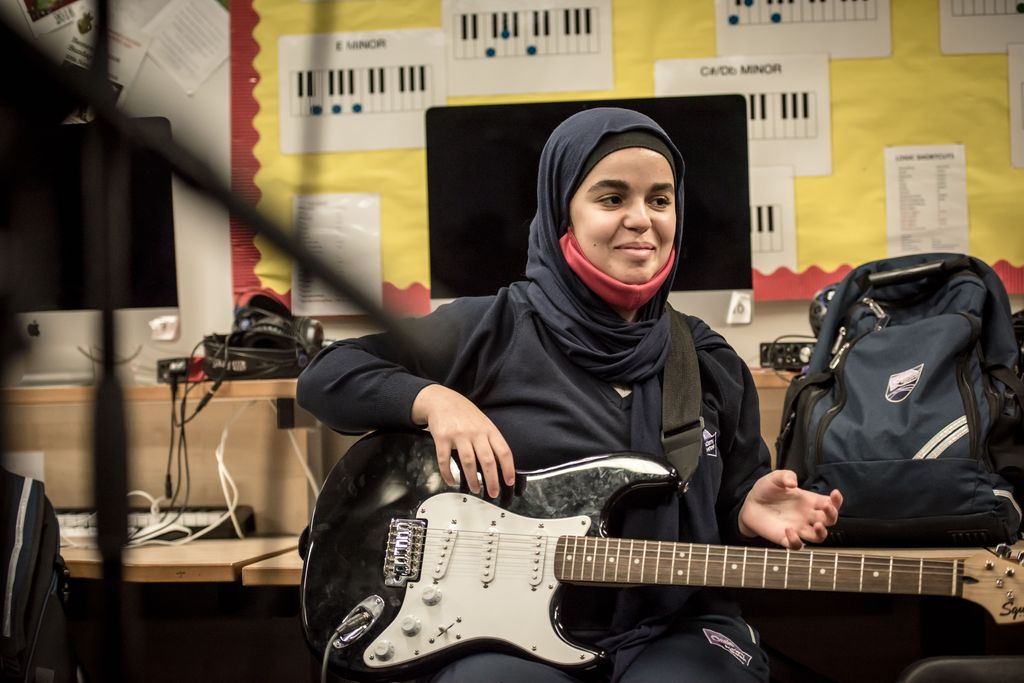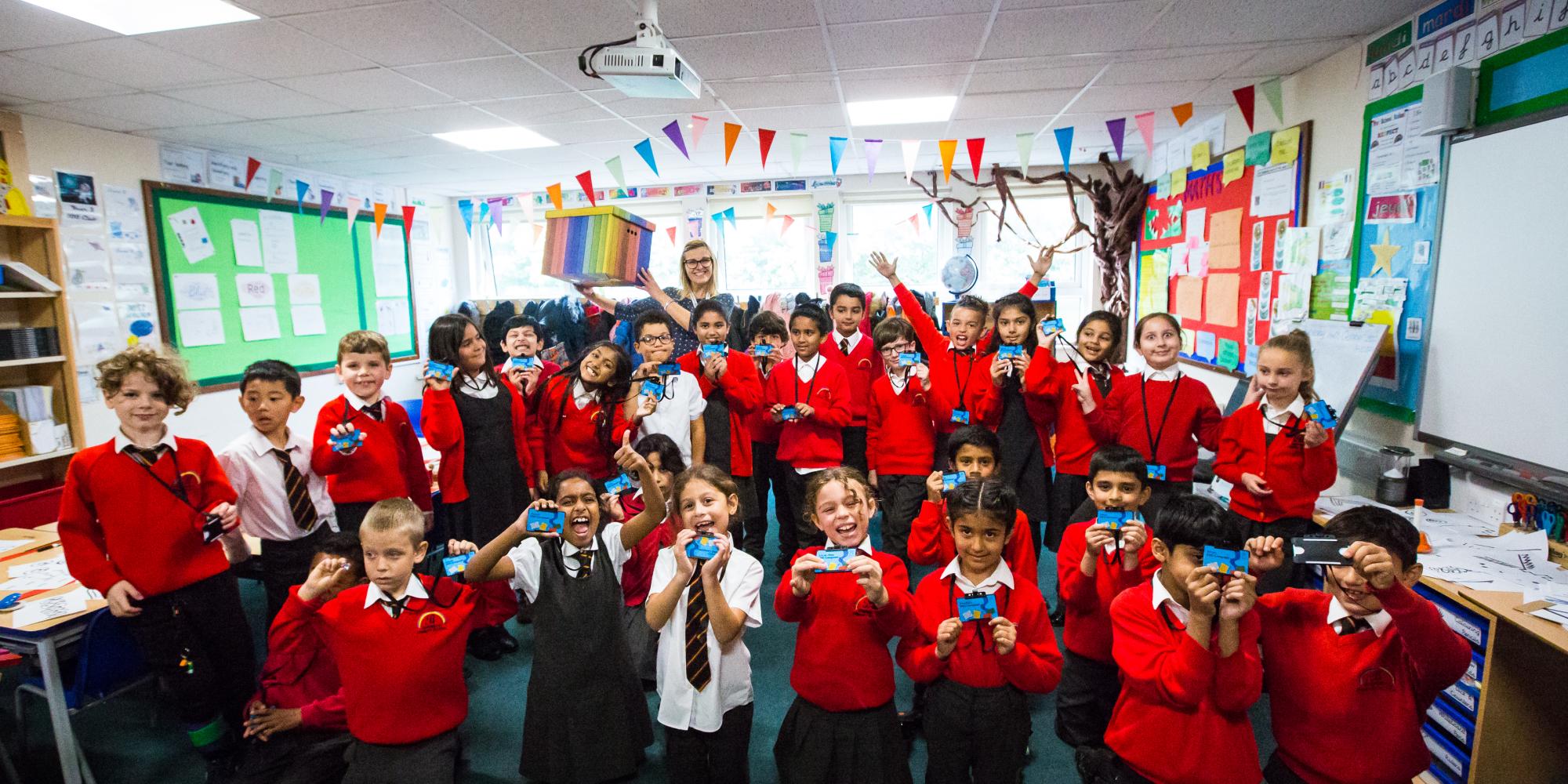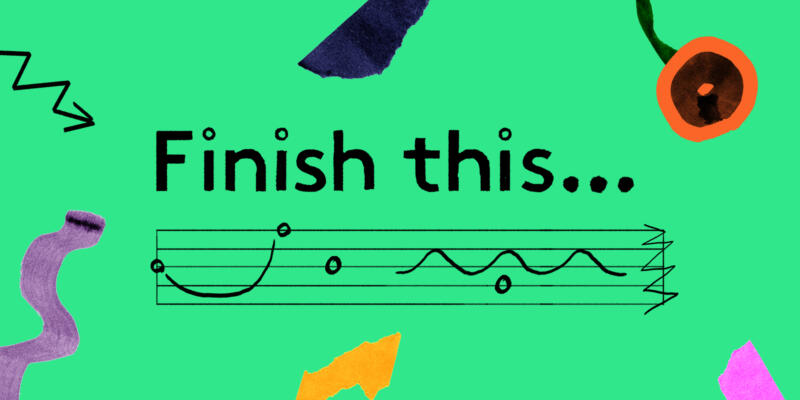Coffee-break interview: Dafydd Williams
In our school newsletters we will be hearing from different freelancers and teachers to find out a little bit more about them and their experiences with ENO Engage.
Finish This… is well underway and children around England have been donning their composer badges and creating exciting new pieces of music.
Music coordinator at Rushmore Primary in Hackney, Dafydd Williams spoke to us about leading his students through the project.
Hi Dafydd! Could you tell us a little about yourself and your work at Rushmore Primary?
I have the brilliant, constantly-challenging, always-inspiring, never-boring job of being the specialist music teacher at Rushmore Primary School. This involves teaching every class curriculum music for an hour a week, as well as running singing assemblies, choirs, band rehearsals, and overseeing a team of 7 visiting instrumental teachers, who in turn run small group lessons and ensembles for over a hundred children each week… Our young people are fantastic, keen and dedicated, and their standard of music-making is really impressive.
I originally trained as a jazz saxophonist, and pretty much fell into teaching work initially as a way to supplement my income – however, I soon realised that I loved it too much to do anything else! I also slightly suspect I’m a much more competent teacher than I was a player. I’ve been working at Rushmore for over a decade now, and it’s really fulfilling to have had this long to build up a school-wide culture that really celebrates making music in such a diverse range of forms.
How have you found taking part in Finish This…
The project has really impressed me. The sequence of lessons seems very well structured, building naturally towards the end goal of having a piece that is identifiably the children’s own work.
The resources and online hub are well made and easy to use; the videos are engaging and useful, and our two Year 5 classes LOVED the composer badges! It’s also refreshing to see an educational resource that teaches about graphic scores the “right way” around – encouraging children to compose their sounds first, then explore ways of recording and notating them, rather than just presenting a pictoral score and asking them to realise it into a performance, without first providing them with grounding in the sound world of the genre.
x

Has anything surprised you about completing the project?
It’s been really encouraging to see the children respond so positively to an unfamiliar contemporary genre, buying into it whole-heartedly. Credit has to go to the clarity and accessibility of the initial piece Blue, Red, Yellow by Omar Shahryar, and the quality and creativity of the supporting visuals.
.

As a music teacher, can you tell us about the impact that learning music has on your students?
Having the opportunity to make music is an inalienable human right! Any education without music education is incomplete. Making music gives people (whether students or not) a richness to their lives that you just can’t get anywhere else… In our school, it also has the pleasant side effect of building a cohesive community, working together to create moments of beauty. I think we’re a very happy school, and regular music making definitely plays its part in that.
What’s the best thing about being a music teacher?
Making music is inspiring and feeds the soul, while working with young people is so endlessly fulfilling and interesting. Frankly, I can’t believe my luck to have ended up doing this for a living – I sing, shake and bang things with children all week, and then at the end of each month I get paid!
.

.
Favourite opera?
You might as well ask me to choose my favourite child… I feel like Mozart pretty much distilled pure beauty into sound, so maybe Così fan tutte? But then there’s Carmen. And Dido and Aeneas. And Hamilton. You’re not going to get a definitive answer from me any time soon, sorry.
Video
The piece of music that got you into music as a career?
Mannenberg by Abdullah Ibrahim. Growing up in London in the 80s and 90s, there was a strong South African presence in the jazz and free scene – I would have heard this through my uncle, who was playing the saxophone at the time. I must have absorbed fragments of the music, becuase when I heard the 1974 recording of Mannenberg a decade later, it was eerily, hauntingly familiar. It’s such an exuberant, joyful style of music that I come back to over and over again, whether listening, teaching or playing.
Video


